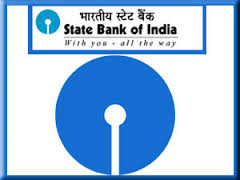History
The origin of the State Bank of India goes back to the first decade of the nineteenth century with the establishment of the Bank of Calcutta in Calcutta on 2 June in the year 1806. Three years later the bank received its charter and was re-designed as the Bank of Bengal. A unique institution, it was firstly started as the joint-stock bank of British India sponsored by the Government of Bengal. The Bank of Bombay (15 April 1840) and the Bank of Madras (1 July 1843) followed the Bank of Bengal. These three banks remained at the apex of modern banking in India till their major amalgamation as the Imperial Bank of India on 27 January 1921.

Their evolution was, however, shaped by ideas culled from similar developments in Europe and England, and was influenced by changes occurring in the structure of both the local trading environment and those in the relations of the Indian economy to the economy of Europe and the global economic framework.
Business
The business of the bank was initially confined to discounting of bills of exchange or other negotiable private securities, keeping cash accounts and receiving deposits and issuing and circulating cash notes. Loans were restricted to Rs.one lakh and the period of accommodation was to be confined to three months only. The security for such loans was public securities, commonly called Company's Paper, bullion, treasure, plate, jewels, or goods 'not of a perishable nature' and no interest could be charged beyond a rate of twelve per cent. Loans against goods like opium, indigo, salt, woollens, cotton, cotton piece goods, mule twist and silk goods were also granted but such finance by way of cash credits gained momentum only from the third decade of the nineteenth century.

Major change in the conditions
A major change in the conditions of the operation of the Banks of Bengal, Bombay and Madras occurred after 1860. With the passing of the Paper Currency Act of 1861, the right of note issue of the Presidency banks was abolished and the Government of India assumed from 1 March, 1862 the sole power of issuing paper currency within British India. The task of management and circulation of the new currency notes was conferred on the Presidency banks and the Government undertook to transfer the Treasury balances to the banks at places where the banks would open branches. Awards and Achievements
- ICRA Mutual Fund Awards in the year 2012 For Various Schemes.
- In the year 2011 the Readers Digest Awards For Trusted Brand in Fund Management. Category and ICRA Mutual Fund Awards 2011 For Magnum Income Fund - Floating Rate Plan - Long Term Plan.
- In the year 2010 ICRA Mutual Fund Awards 2010 For Magnum Global Fund.
- ICRA Mutual Funds Awards 2009 For Magnum Tax Gain Scheme 1993.
- The Lipper India Fund Awards 2009 For Various Schemes.
- Outlook Money NDTV Profit Awards 2008. The Lipper India Fund Awards 2008. Magnum Balanced Fund - Dividend. ICRA Mutual Fund Awards 2008.
- Outlook Money NDTV Profit Awards 2007. CNBC Awaaz Consumer Awards 2007, The Lipper India Fund Awards 2007 For Various Schemes.
- ICRA Mutual Funds Awards 2007 For Various Schemes.
- CNBC TV18 - CRISIL Mutual Fund of the Year Award 2007 For Various Schemes.
 INDIAN BANKING INDUSTRY AT A GLANCE IN 2014-2015
INDIAN BANKING INDUSTRY AT A GLANCE IN 2014-2015
 INDIAN BANKING INDUSTRY AT A GLANCE IN 2013-2014
INDIAN BANKING INDUSTRY AT A GLANCE IN 2013-2014
 INDIAN BANKING INDUSTRY AT A GLANCE IN 2012-2013
INDIAN BANKING INDUSTRY AT A GLANCE IN 2012-2013
![]() INDIAN BANKING INDUSTRY AT A GLANCE IN 2011-2012
INDIAN BANKING INDUSTRY AT A GLANCE IN 2011-2012
![]() INDIAN BANK'S ASSOCIATION (iba)
INDIAN BANK'S ASSOCIATION (iba)
Indian Industries


